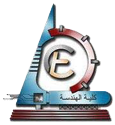The maximum a posteriori (MAP) technique, combining intensity and spatial interactions, has been a standard statistical approach for image segmentation. Crucial steps for the MAP technique are the model identification, incorporation of priors, and the optimization approach. This paper describes an unsupervised MAP segmentation framework of N-dimensional multimodal images. The input image and its desired labelling are described by a joint Markov-Gibbs random field (MGRF) model of independent image signals and interdependent region labels. A kernel approach is used to model the joint and marginal probability densities of objects from the gray level histogram, incorporating a generalized linear combination of Gaussians (LCG). A novel maximum likelihood estimate (MLE) for the number of classes in the LCG model is introduced. An approach is devised for MGRF model identification based on region characteristics. The segmentation process employs LCG to provide an initial segmentation, and then alpha-expansion move algorithm iteratively refines the labelled image using MGRF. The resulting MAP algorithm is studied in terms of convergence and sensitivity to initialization, improper estimation of the number of classes, and discontinuities in the objects. The framework is modular, allowing incorporation of intensity and spatial interactions with varying complexity, and can be extended to incorporate shape priors.
Research Member
Research Department
Research Year
2012
Research Journal
IET Computer Vision Journal
Research Vol
6(6)
Research Rank
1
Research_Pages
524-539
Research Abstract

